In the first part of this interview with literary historian Noémi Saly, we talked about the golden age of coffee houses in Budapest. In the second part, you will learn about how the role of coffee houses has changed over the years and about some specific cafés that are absolutely worth a visit if you’re in town. But first, watch our latest video that we filmed in three of the most popular coffee houses in Budapest.
How did the role of coffee houses change in Budapest after the golden age?
Coffee houses have always been the places where people could gather and talk about anything, and in this way, they have always represented democracy.
Obviously, this was not possible during the Communist regime, and therefore, a new form of cafés was introduced during this time, the so-called espressos that were small places where people spent only a couple of minutes until they finished their coffees, usually at the counter.
And even if there were tables, those were very small ones, so even the interior design suggested that people shouldn’t stay for long. This is the exact opposite of how it was before the Second World War: during the golden age of coffee houses, people could spend their entire days at the cafés, where they could work, meet their friends, etc.
Today, the ruin pubs and kerts have a similar role: they have long opening hours, people can leave their books there in the morning and then pick them up later in the evening, they can take their bicycles inside, and they can also talk to anybody. In addition, just like before, these places help people to access information.
The only difference is that while before, the coffee houses had all the newspapers as the sources of information, today, the kerts and ruin pubs have free WiFi and people use their own laptops and smartphones to access the information they need.
What are the coffee houses like today?
I organized a photo exhibition a couple of years ago, in which I categorized the modern coffee houses. I came up with some basic categories: first, there are the “great survivors”, a few traditional coffee houses that still operate at the same location under the same name.
One of these coffee houses is the Museum Café and Restaurant from the 1880s, which is quite an expensive restaurant today. Then Café Astoria Restaurant is another traditional coffee house that was recently renovated. It has also been there for a very long time.
The café at the Royal Hotel is another good example, although it used to be a lot more accessible for the locals. There is the second category that includes cafés that have been reopened after a long time, usually at the same location. Gerlóczy is a good example along with Alibi or Csendes, where the famous Fiume coffee house used to be.
Within the third category, there are French-style cafés. Basically, you can find these places at Liszt Ferenc Square; one good example is Café Vian, which was the first café in the area with this French style. It’s easy to spot these cafés with the terraces and the typical interior design that represents the style of the 1930s and 1940s.
Then there are the tiny cafés, which are not espressos, but small cafés with no more than three tables. These are very popular cafés and they have great customer service. Another interesting café is Spinoza, that somehow brings back the atmosphere of the old music coffee houses although those places used to have their performances in the coffee house while Spinoza has a separate room for that.
But having a theatre in a coffee house is a very old tradition and it was also popular in Western Europe. In Paris, for instance, these coffee houses were called café-chantant. And again, as another category, there is the coffee house that brings back the once modern coffee house style. A good example is Dunapark Café Restaurant from the 1930s with its Bauhaus style.
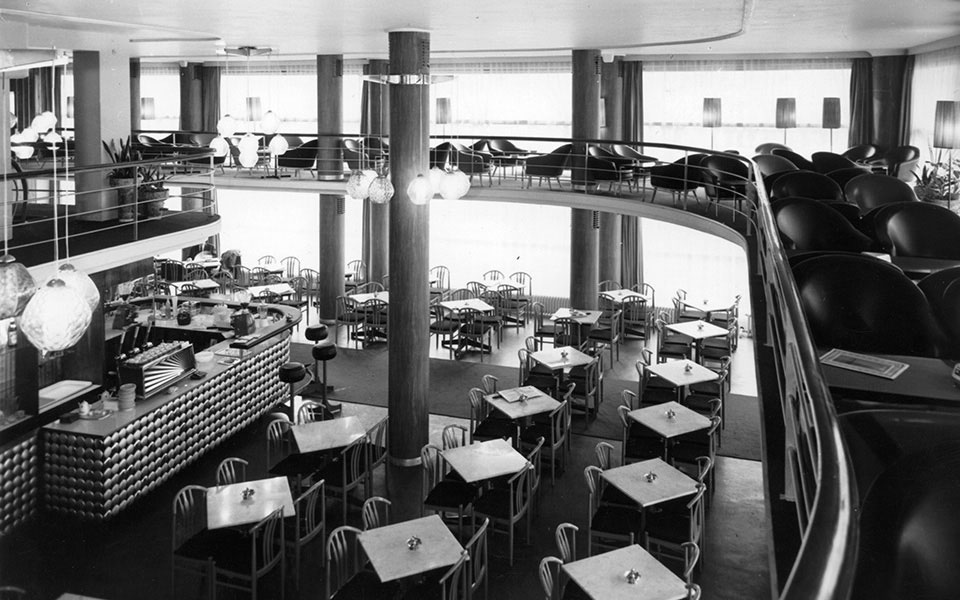 Dunapark Café Restaurant in the 1970s. Photo: fortepan.hu
Dunapark Café Restaurant in the 1970s. Photo: fortepan.hu
 Dunapark Café Restaurant in the 1970s. Photo: fortepan.hu
Dunapark Café Restaurant in the 1970s. Photo: fortepan.hu
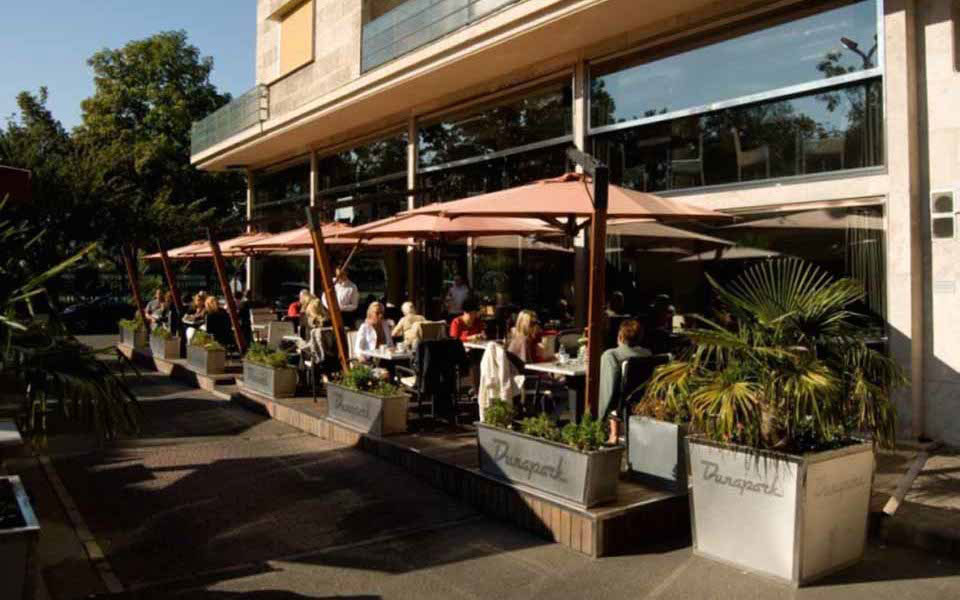 Guests enjoying the nice weather on the Dunapark terrace. Photo: dunaparkkavehaz.com
Guests enjoying the nice weather on the Dunapark terrace. Photo: dunaparkkavehaz.com
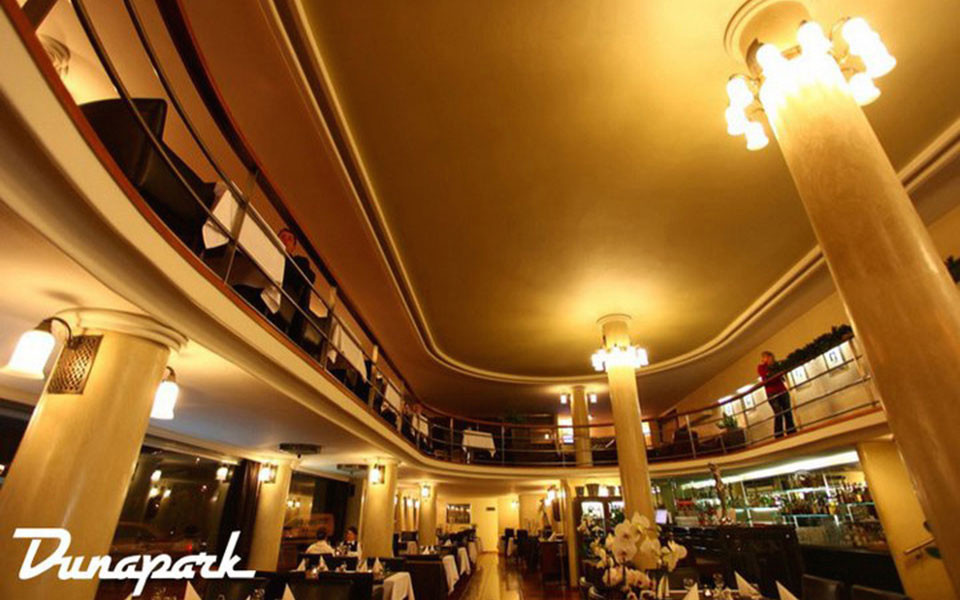 The Dunapark Café and Restaurant today. Photo: dunaparkkavehaz.com
The Dunapark Café and Restaurant today. Photo: dunaparkkavehaz.com
Why do you think coffee houses are still so popular in Budapest?
In fact today, people in Budapest live a very similar lifestyle as people lived during the golden age of coffee houses.
However, while before, people spent a lot of time at the coffee houses because their living conditions were far from ideal (there was a significant shortage of housing in Budapest in the early 20th century so people often lived in small or even shared rooms with facilities that were far from ideal), today, many people don’t work in an office but instead, they spend a couple of hours here, a couple of hours there, they arrange meetings at cafés, and what’s more, they might live far from the city center and so it wouldn’t make much sense for them to go home in the middle of the day.
So today, if you go to a café during the day, you see people who work on their laptops, you see people having a business meeting, you see people who are looking for a job, or you see people who might be unemployed and just hang out at a café, and you also see older people reading the paper over coffee.
In addition, there are lots of students, too, who want to kill some time in the cafés since their dormitories are in the suburbs and they have their classes in the center.
Do you have a favorite coffee house?
It might sound a bit strange but I’m actually not a big coffee house goer. I do go to coffee houses sometimes, but I don’t go as frequently as you would think given my profession. I really like Central Café and from the very beginning, I was on the team, along with other historians, the architect and interior designer, which worked closely with Imre Somody, the owner, during the renovation process.
It was very interesting to see how his ideas changed based on our suggestions. I also like Gerlóczy, which is quite an interesting place: it’s not one of those traditional Budapest coffee houses, although sometime before the First World War, there was a café called Gerlóczy in that very building. However, Tamás T. Nagy, the owner has managed to create a coffee house culture and today when you go to Gerlóczy, you have the feeling that it has always been a café.
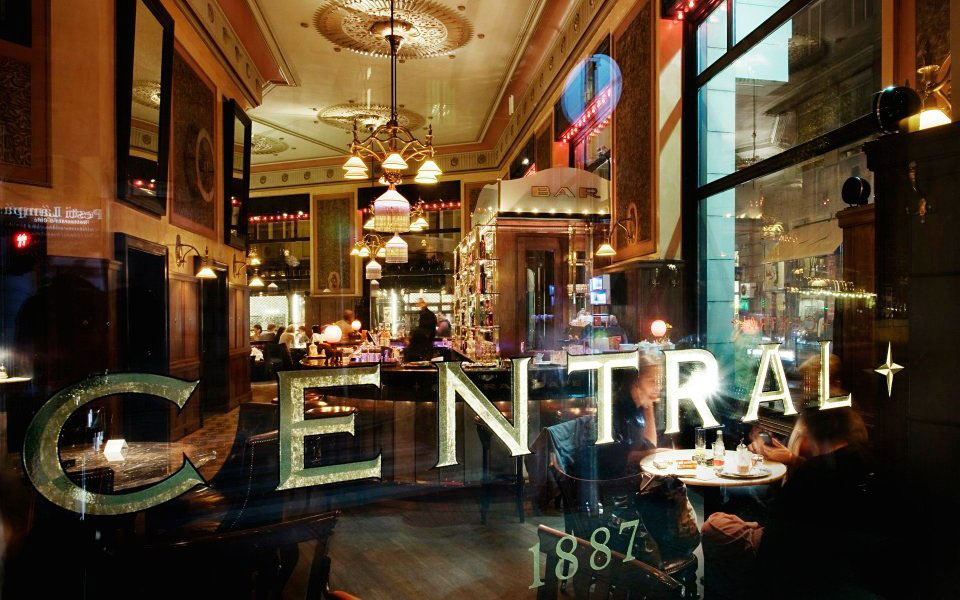 Central Café. Photo: official Facebook page of Central Café
Central Café. Photo: official Facebook page of Central Café
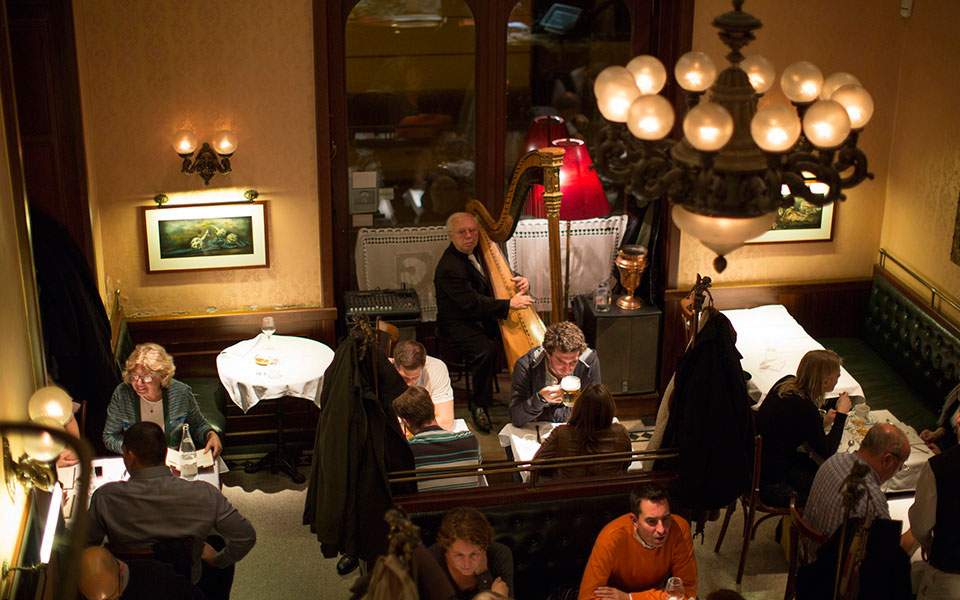 Interiror of Gerlóczy Café. Photo: Gerlóczy Café
Interiror of Gerlóczy Café. Photo: Gerlóczy Café
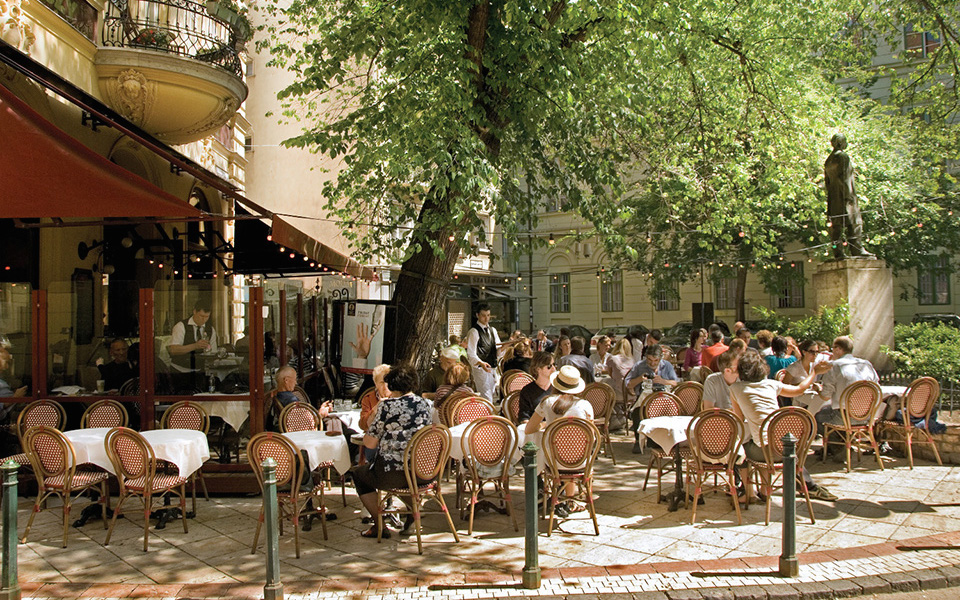
The cozy terrace of Gerlóczy Café. Photo: Gerlóczy Café
My other favorite café is Tranzit on Kosztolányi Square. It’s a very interesting place, not only because of its unique architecture and interior design, but it’s also a great example of what a difference it makes when a place like this has a soul. In other words, there has to be someone, who takes care of the place and who makes the place successful. In the case of Central, it was interesting to see how the atmosphere of the coffee house changed after Imre Somody took my advice and started spending more in the coffee house, working among the guests.
At Tranzit, the soul is Orsolya Egri, and as a woman she also sees things differently. Already in the beginning, she didn’t focus on the profit, which obviously made the operational part more difficult, but eventually it all worked out.
Basically she realized early on that it was through regular guests that she can achieve success in the long run. If you look at New York Café, it’s obvious that the place hasn’t really had its own identity up until now because the target group was basically the tourists.
So it was a crucial moment when the Hungarian management realized that organizing cultural events have to be part of the identity of New York Café. And even if it’s not happening every single day, it still makes a big difference.
Then I really like Remíz, which is a café-restaurant, where again, it was a woman, Alice Meződi, who managed to create a very special atmosphere. At Remíz, the service is extremely friendly, which is one of the main assets of the place.
And of course, now there are the so-called kerts that I had mentioned, which play a similar role in the locals’ lives as the coffee houses used to play.
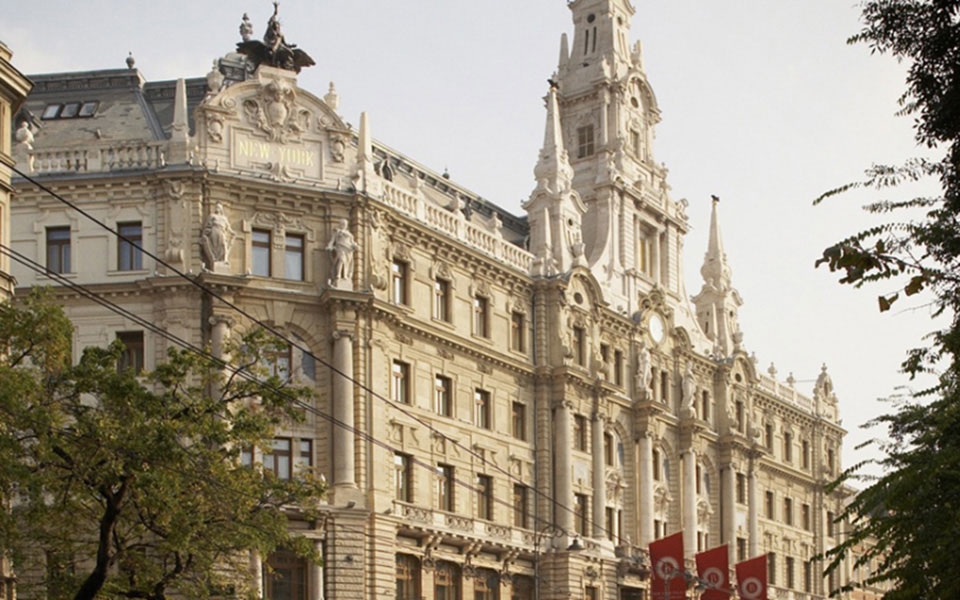 The exterior of New York Palace. Photo: newyorkcafe.hu
The exterior of New York Palace. Photo: newyorkcafe.hu
 Amazing details of the interior at New York Café. Photo: newyorkcafe.hu
Amazing details of the interior at New York Café. Photo: newyorkcafe.hu
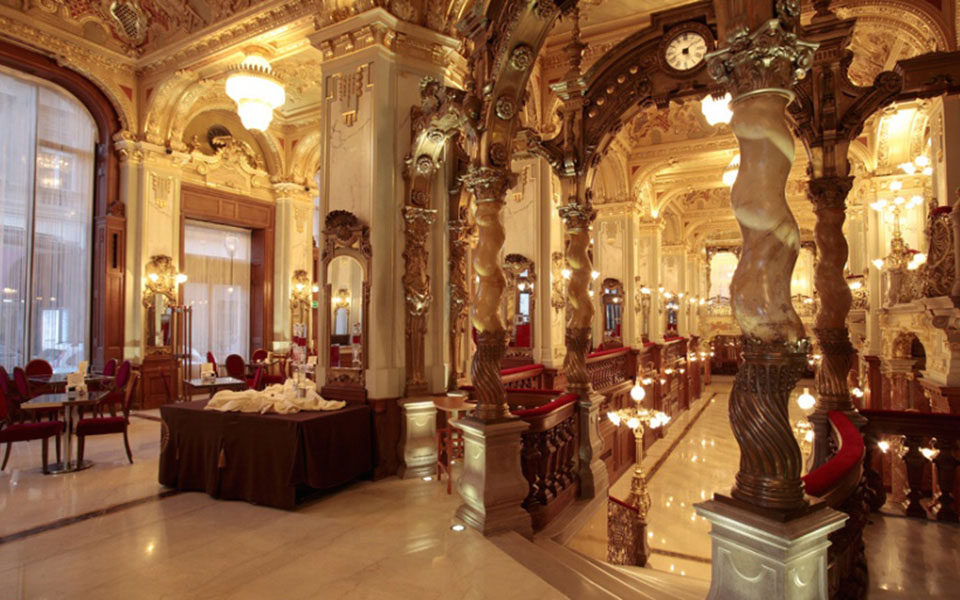 Breathtaking interior of New York Café. Photo: newyorkcafe.hu
Breathtaking interior of New York Café. Photo: newyorkcafe.hu
Do you go to these ruin pubs sometimes?
In general, I don’t like very noisy places, so in the evening, bars like Kuplung are a little bit too loud for me. But during the day, I like going to Szimpla, for instance. And Szimpla is actually a very good example of places with a soul that I was talking about earlier. At Szimpla, this soul is Ábel Zsendovits.
What is the locals’ favorite type of coffee in Budapest?
Hungarians first encountered the strong Turkish coffee. Later on, since people had already got used to this strong type of coffee, it was then the Italian-style small espresso that became popular.
If you want to have excellent coffee, where do you go in Budapest?
All the coffee houses and cafés that I mentioned have very good coffee. But I actually really like Café Semiramis on the third floor of the market on Fény Street.
Related Experiences
Sweet & Coffeehouse Walk
3 hours 79 USD
Enjoy your coffee and cake at legendary coffeehouses, hidden cafés and hip coffee
shops.
LEARN MORE
Budapest Food Tour
4 hours 90 USD
Try the best Hungarian foods and learn all about Budapest’s wonderful culinary scene.
LEARN MORE
Budapest Dinner Walk
4 hours 110 USD
Why have dinner at only one restaurant if you can sign up for this tour that will take you to five different places?


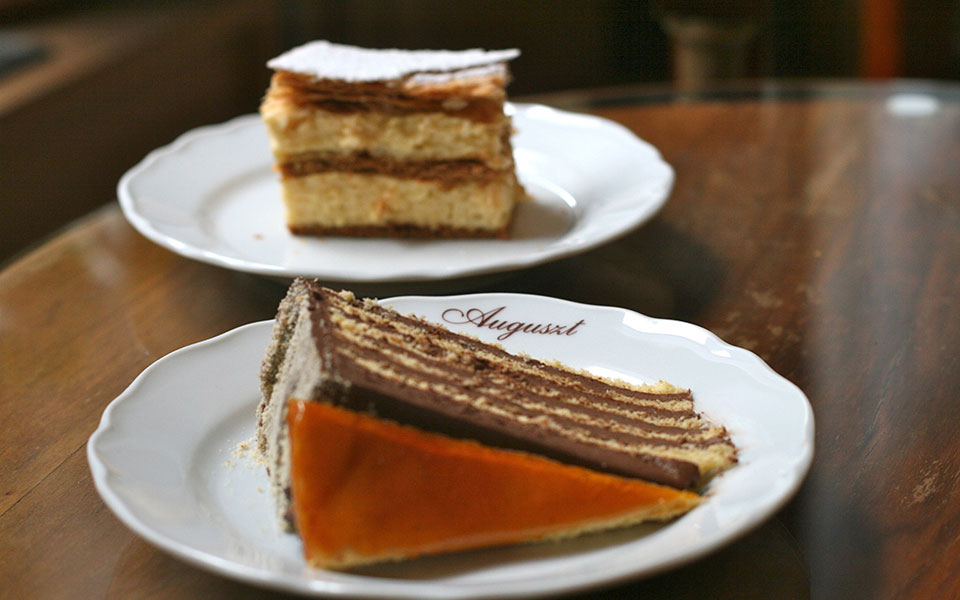
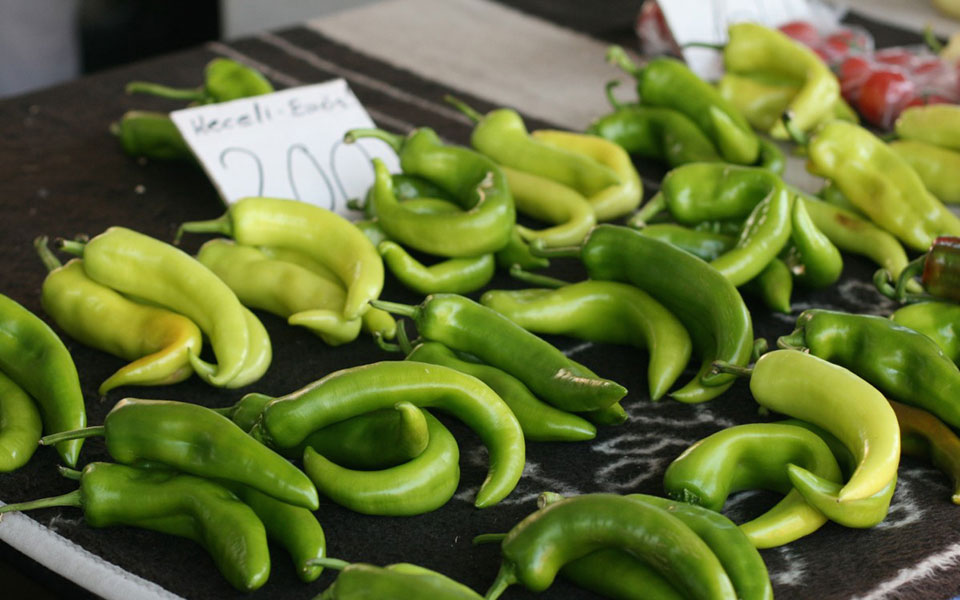

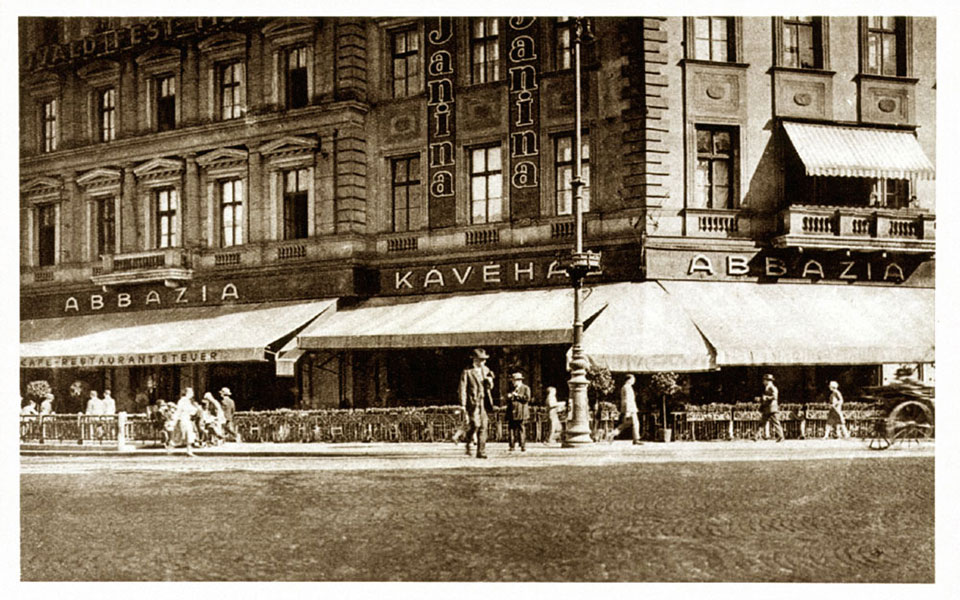
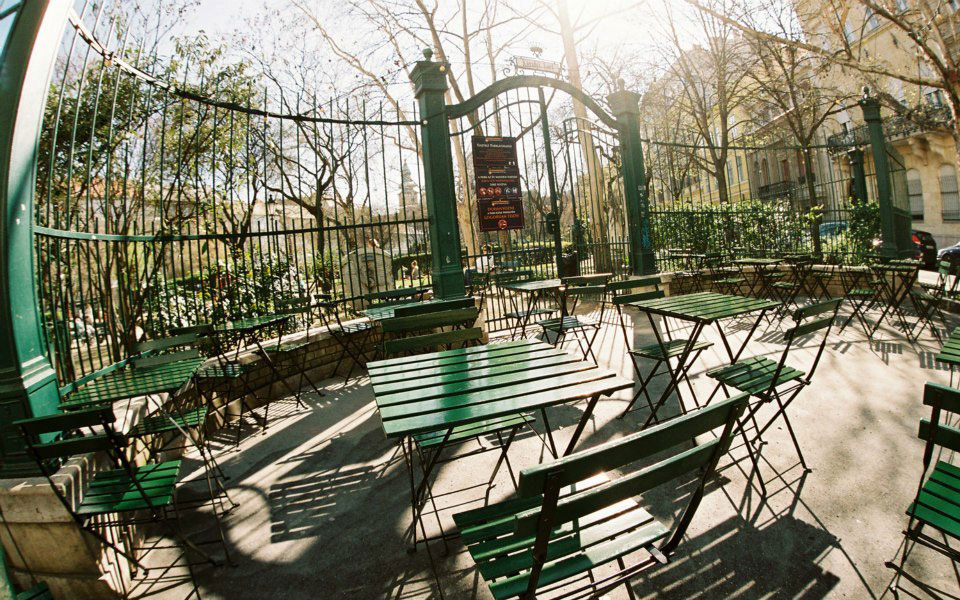

Hello,
I am an American folk, blues, Americana musician. I am planning a trip to Budapest in October. I would like to line up some gigs/concerts at coffee houses in Budapest or the surrounding region during my stay.
Can you give me any insight or contacts on how I can proceed with booking some gigs?
Thank you very much.
Hi Larry,
I’ll put you in touch with someone about this via email.
Best,
Hajnalka